Wellington is New Zealand’s capital city, situated on the southern coast of the North Island. It’s significantly smaller than Auckland but has a thriving cafe culture and a vibrant city centre. Here’s a glimpse into our favourite things to do in Wellington and some essential tips for your visit to the city.

I was lucky enough to live in Wellington many years ago, I travelled there regularly during my corporate life and more recently have experienced it again as an international visitor. I have to say I still have a soft spot for the city and how easy it is to fall in love with it, especially when the sun shines.
Our top things to do in Wellington
We’ll mark the spots on the map below to give some context when building your own itinerary and to help you group the options that interest you in each part of the city.
Explore the Wellington waterfront
We highly recommend doing this on foot it’s very easy to walk down from any city accommodation. Starting from the northern end you’ll walk along Queens Wharf, through Frank Kitts park, over the Whairepo lagoon and pass behind Te Papa. Further along you’ll find Waitangi park and Clyde Quay Wharf before joining Oriental Parade and continuing on to Freyberg Park and Oriental Bay.

Many of the city attractions are on this route so it you want to get out of the business and shopping hub this is where to start.
Go further, hire a cycle
While we have suggested doing this on foot it is also possible to hire cycles on Queens Wharf to help you move around faster or further. We’d particularly recomment this if you are staying along the waterfront, through the city and particularly up the hills behind towards Mt Victoria or the Botanic gardens is going to be hard work.
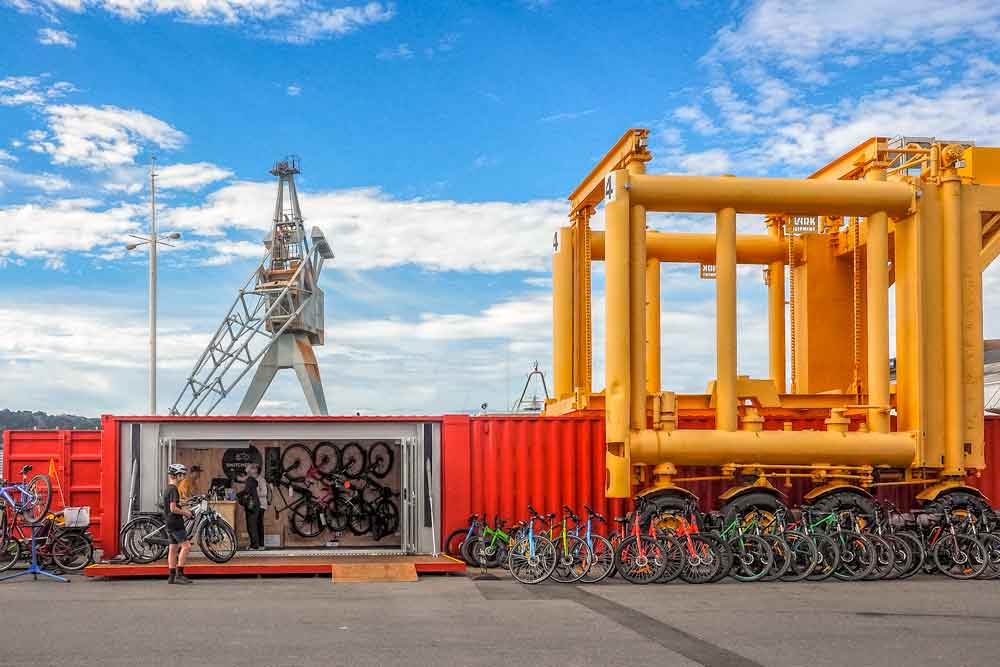
Switched on bikes cater for most needs with adult and child sized bikes, electric bikes if the hills are daunting to you, or a choice of town and mountain bikes if you’re happy with pedal power.
The Beehive
The seat of power is usually on the itinerary when in a country’s capital but the New Zealand Parliament Building is quite distinctive. Known as the Beehive it was opened by Queen Elizabeth II in 1977 and the final annex completed in 1981.
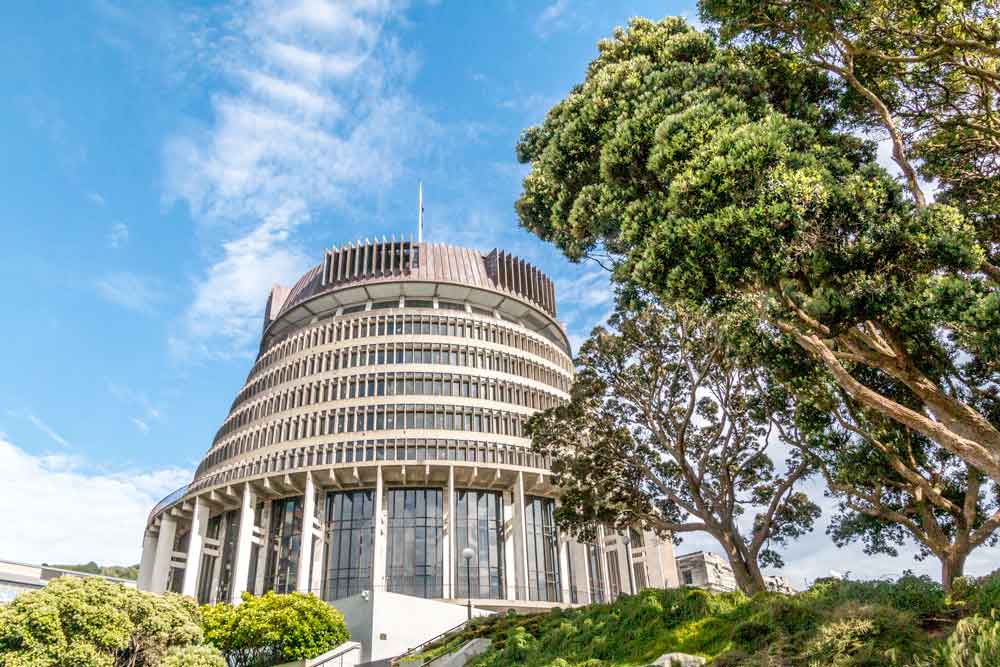
The circular building is an intriguing design but a somewhat impractical use of space. Inside it’s extensively decorated with New Zealand art and connected by underground tunnels to adjacent parliamentary offices.
You’ll at least want to walk past to appreciate the unique design and the art in the gardens but if you have time there are tours run on the hour, there is a 30 or 60-minute version, an interactive tour for children under 12 and another focused on the art collection that runs on select dates. You can check the available tour schedule when you’re in town on the official website.
Ride the Cable Car
Perhaps it’s because I grew up in Wellington but the cable car ride from the city up to the botanic garden is one of Wellington’s iconic attractions and even if you don’t have a strong interest in the garden itself it’s well worth taking the ride up for the experience and the great views out over the harbour from the top.
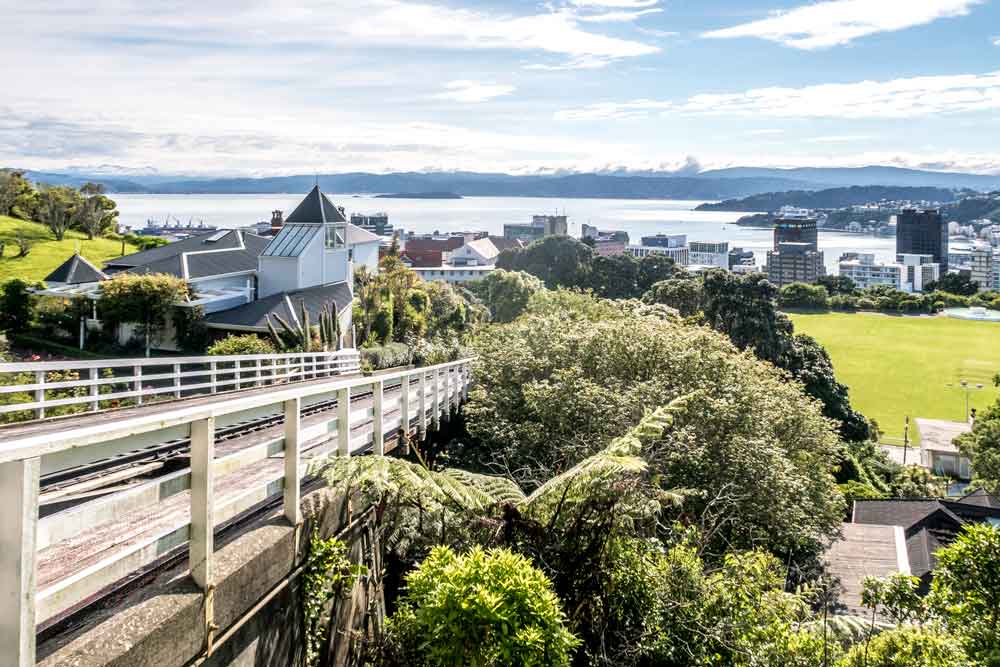
It’s fairly affordable at $5 for a single adult ticket or $9 return. It takes around 5 minutes for the trip each way and it departs regularly throughout the day. We found it useful on our most recent trip to get from our chosen breakfast cafe on Lambton Quay to the shuttle pickup for Zealandia which is just outside the nearest gate.
There’s a cable car museum at the top station that shares the history of the cable cars in the city from their construction that began in 1899. The old cable cars ran until 1978 when the new system was opened. I’ve ridden in both several times and it’s a very efficient way to get up the hill to the botanic gardens.
Botanical Gardens
The 25-hectares of botanic garden is situated on the hillside between the city centre and Kelburn. There are many entrances to the gardens from above and below but the most popular for visitors is via the Cablecar which brings you into the top southern end of the garden.
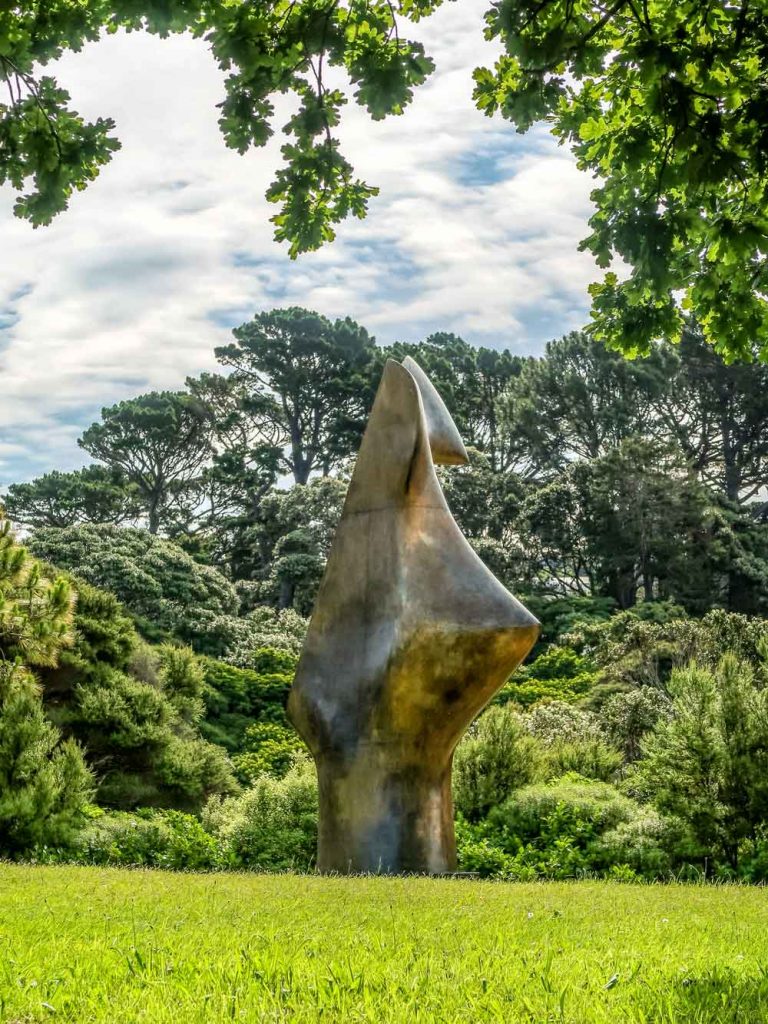
There’s a lot to see and do here from the discovery garden to native forests and seasonal flower displays.
Zealandia Sanctuary
Zealandia is a gorgeous tract of natural forest only a few minutes from the central city. It’s a native bird and reptile sanctuary but it is not a zoo, they are in the wild and free to come and go. The perimeter fencing and care in the setup is all about what it keeps out, introduced pests and threats that prevent the native wildlife from thriving.

It has been set up with a 1000 year plan to protect and restore New Zealands diverse birdlife and it is already have an effect. We were excited to note that even walking through Parliament gardens and city parks there was noticably more birds, expecially the beautiful tui, one of my personal favourites.
You can read more about our day at Zealandia Sanctuary and check the ticket prices here.
Get out on the harbour
As you can see on the map at the top of the page, Wellington has a large enclosed harbour basin.
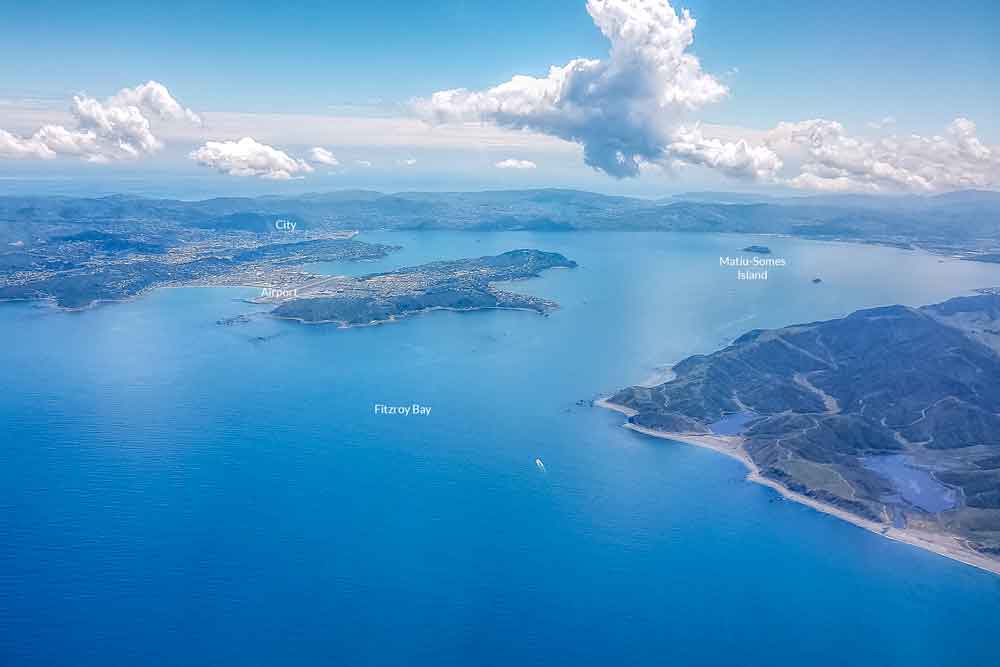
Matiu-Somes Island is in the middle of the harbour and is now a conservation reserve. It has an interesting history having been a quarantine station since the end of the Great War when it was used to quarantine returning soldiers suspected of having Spanish Flu. Before European settlement there were 2 Maori Pa on the island for temporary use during conflict between the various iwi (communities).
It’s an exposed and harsh environment but ruggedly beautiful. Its isolation and being free from introduced pests make it an ideal native wildlife sanctuary. You can camp out here and there are a few cabins but it’s ideal as a day trip to hike around especially if you have an interest in New Zealand wildlife including the Korora, the world smallest penguin and the prehistoric lizard, the tuatara.
There aren’t tours to Matiu-Somes but you can catch the Days Bay ferry from the central city and get off here, not every ferry makes the detour so check first. You can also combine your day with a few hours exploring Days Bay. You’ll catch the East by West Ferries that leave from Queens Wharf.
Street Art around the city
Wellington isn’t really known for its street art so we were surprised how much there was to discover once we started to wander off the main streets and look for it. Something to remember in Wellington is that it is built on the hills so unless you are going to stay right on the waterfront your legs are going to get a workout by the end of the day.

In addtional to the typical murals there are also a lot of scultpures and other forms of outdoor art. Keep your eyes peeled as you walk around and see what you can find.
Wellington Underground Markets
Update: These markets are currently closed due to the premises not meeting earthquake standards, organisers expect to reopen in new premises by September so stay tuned! I’ll update the map as soon as we have confirmation.

The Underground Markets have been a Wellington institution for over a decade. They offer a full range of art, crafts, fashion, gourmet food products, gifts and souvenirs making it a popular spot on a Sunday.
Their underground, all-weather location is a real asset in the Wellington climate when a shower of rain or brisk wind can come out of nowhere.
Whairepo Lagoon
This small lagoon on the Wellington waterfront is connected to the harbour through a narrow channel allowing access for the rowing club. It’s an attractive public space with the walking path around the back and connects to the distinctive Te Raukura building with its roofline reminiscent of the traditional sails of a waka fleet.
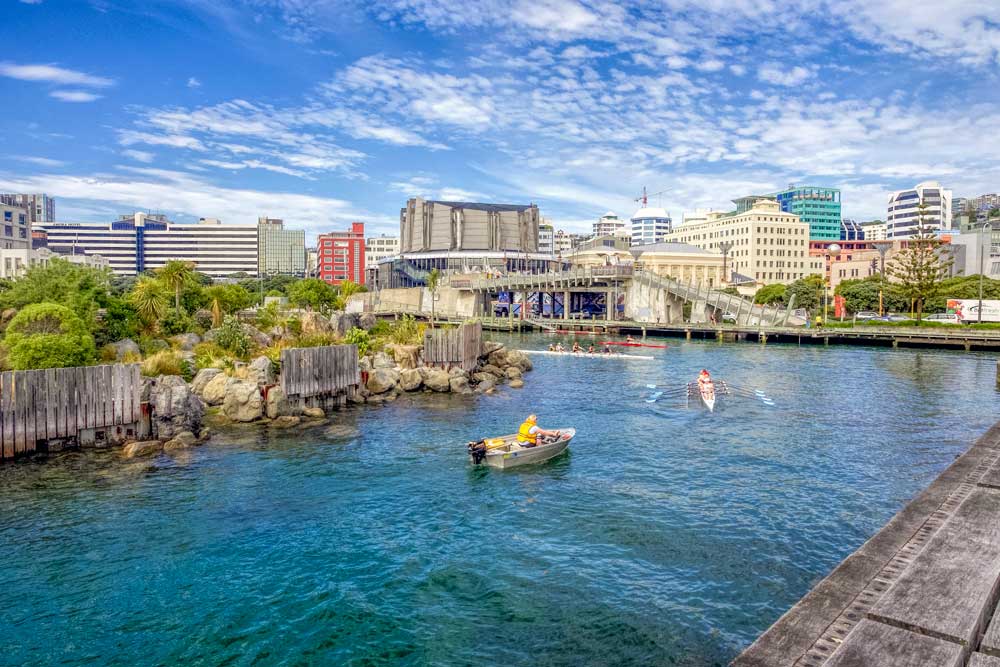
In the Te Ruakura building is the Karaka Cafe with a grassed terrace area so you can get a drink and grab a woven blanket to sit out with this fabulous ever changing view. There is also a waka house where the city’s ceremonial traditional canoes are kept.
Stay open to whatever pops up
Around the city, especially on the weekends, you’ll be surprised what pops up. Market stalls, musicians, street entertainer and … well over the summer it was a sauna!
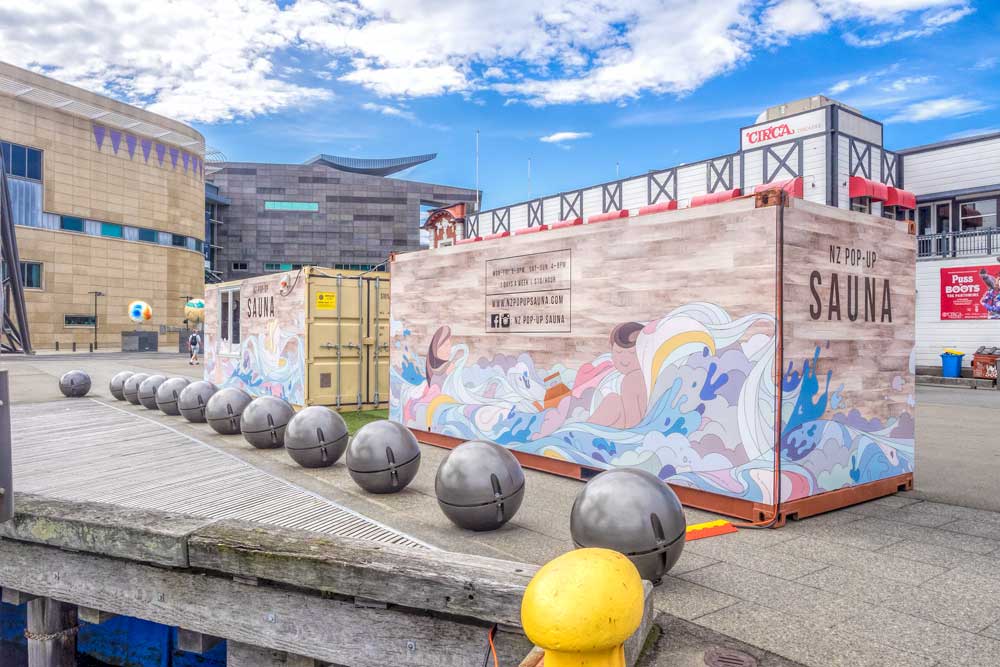
Not totally sure about getting my kit off in a shipping container sauna in the middle of the city but it just goes to show you can never be sure what to expect next so keep your eyes open.
Cuba Street Mall & Te Aro area
I dragged Drew up to Cuba Street to see the ‘huge bucket fountain’ I remembered from when I was a kid. Turns out I was a small kid and while the nostalgic fountain is still there it’s not even half as big as I remembered and not the main reason you need to head out here.

The pedestrian mall contains an esclectic mix of high end fashion, budget brands and tourist stores many with great examples of Art Deco storefronts but it’s once you got off the main strip that it gets interesting.
Head left at the intersection and search out Left Bank Arcade, Leeds Street and Hannahs Precinct, site of the old Hannahs shoe factory. The place has seen some significant investment and has some fabulous street art, great cafes and bars.
Te Papa Museum
Te Papa is the National Museum with a picturesque waterfront location. It’s a modern facility with a good variety of permanent and temporary exhibitions. Entry is free (donation appreciated) to the main collections and often to the special features too.
There is a cafe and other seating space within the spacious interior to take some time and take it all in. The Maori history section is excellent but no photography is allowed in there and on our most recent visit we were really lucky to have the chance to see the Gallipoli: The Scale of Our War exhibit.

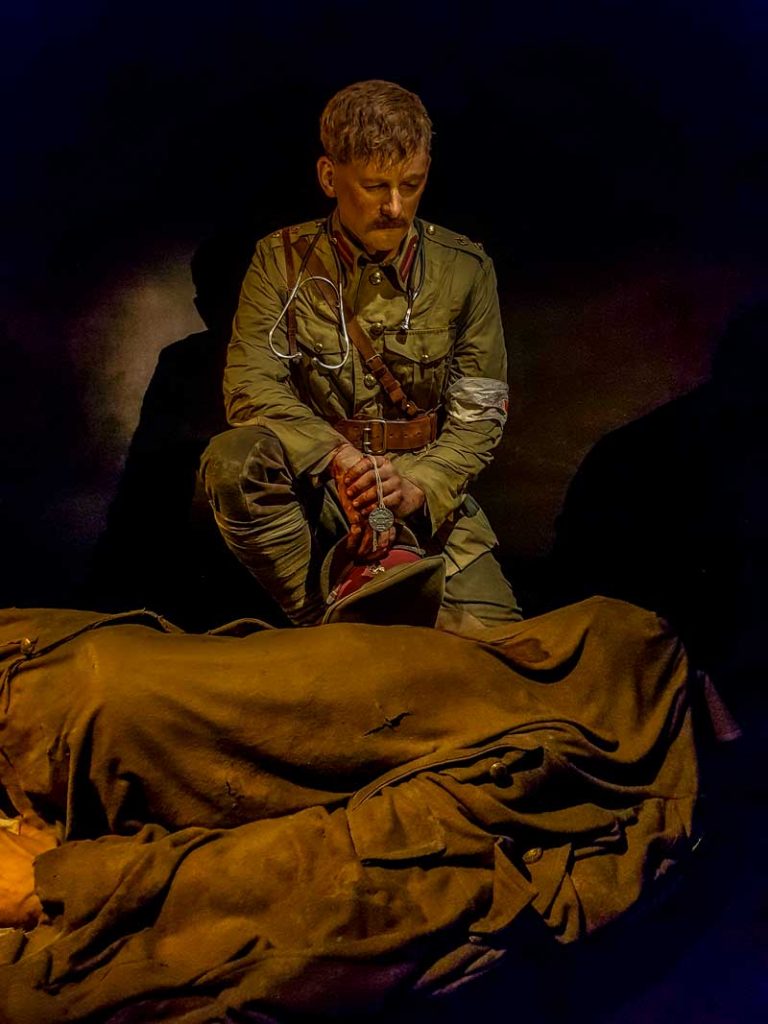
It’s extremely emotional and raw taking the accounts from individuals extracted from letters and journals and weaving those stories into the oversized scenes created by Weta Workshops.
Kiwi bush in the city centre
Directly between Te Papa and the harbour is an incredibly well done section of New Zealand bush in the central city. In total scale it’s tiny but the clever design and elevated walkways including a swing bridge make it appear far denser than it really is.

I hope you’ll have the chance to spend some time hiking, or tramping as the locals call it, in the actual Kiwi bush but in the meantime spend a few minutes to take a look here, it’s impressive what they’ve achieved.
Harbourside Markets – Sunday
A popular spot on the weekends in the city is the harbourside markets located next to Te Papa on the weekend. They have an incredible selection of farm-fresh produce, artisan food products and great quality food trucks including my own favourite, the guys at Almost Gourmet which I’ll cover in the where to eat section below. You’ll get great coffee too, it is Wellington after all.
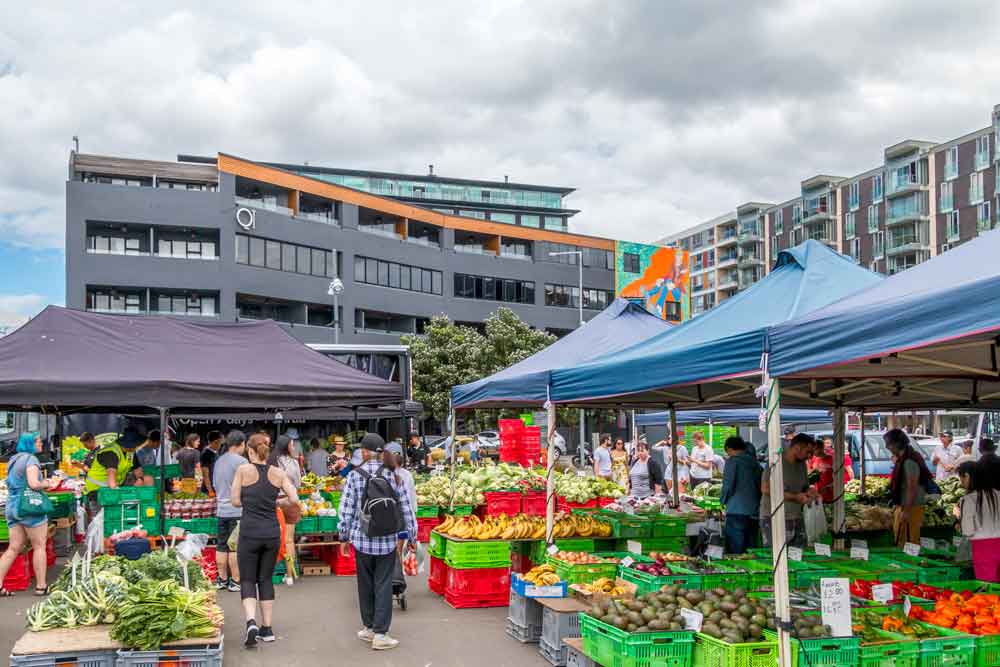
Harbourside is Wellingtons oldest market and opens at 7.30am every Sunday and stays open until 1-2 pm depending on the season.
Waitangi Park
Also adjacent to Te Papa is the 6-hectare Waitangi Park, a public space consisting of green space, walking paths, gardens, a playground, skate park and a waka launch area (manmade beach) that serves as a great picnic area to sit during the markets or if you’ve picked up a coffee to go.

You’ll notice that a lot of the garden areas appear to be recreated wetland gardens with gravel, native grasses and reeds. This has been done to help filter the Waitangi stream that runs beneath.
My long term memory has this as a huge bus parking area so kudos to the city for the innovative development of the urban space. The whole waterfront precinct is impressive.
Chaffers marina and its colourful boat sheds
If you hug the water’s edge as you walk from Te Papa towards Oriental Bay you will come to Chaffers Marina, a deep water marina in the heart of the city with state of the art facilities for visiting boaties. However, it also has these heritage boat sheds that I have loved since I was a child.

They were built between 1905 and 1922 on the newly formed harbour. They were designed by Wellington Harbour Board engineers and the earliest of them are technically interesting being built entirely from concrete.
The walkway around in front of them is public so you can walk along the waters edge rather than the elevated pavement that runs along behind them level with the rooves.
Oriental Bay
Not many cities have beaches quite this close to the CBD. It’s a clean sandy beach, safe swimming and is an easy walk from the city attractions and accommodation.
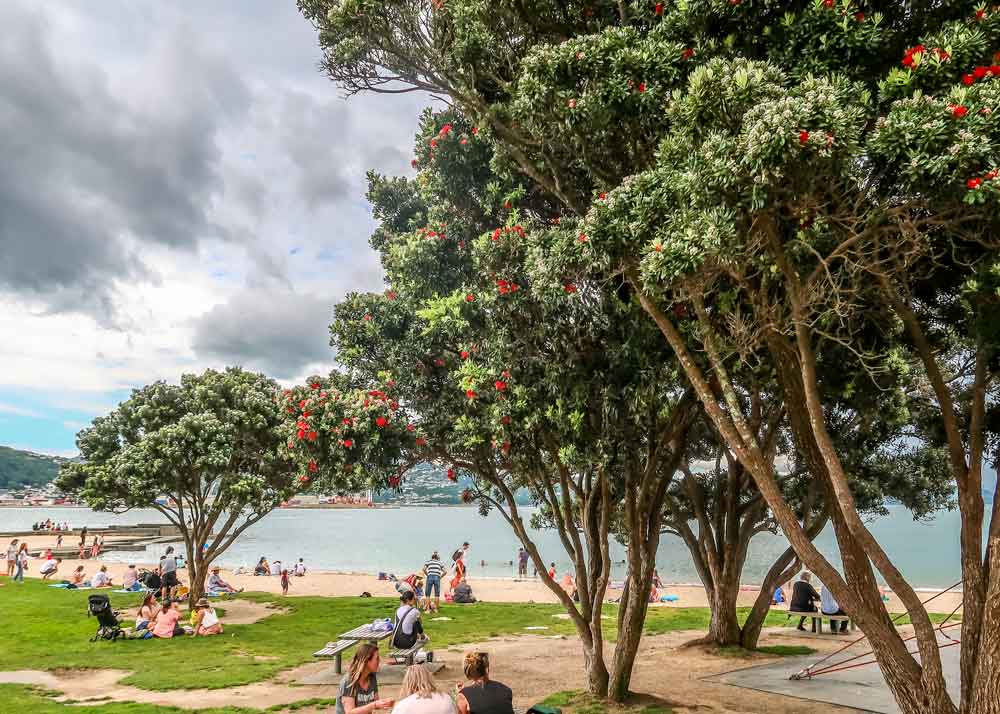
There’s a decent size stretch of sand to spread out in the sunshine with a picnic or some great cafes to relax with water views if you prefer.
Take a walk along the promenade, the Freyberg pool on the waterfront is heated if the sea temperature feels a bit cool to you or cycling and rollerblading are popular along the waterfront.
Mt Victoria lookout
The views from the botanic gardens at the top of the cable car out over the harbour are excellent but there is somewhere that offers perhaps even better views and that is the Mt Victoria lookout that is also walking distance from the city, it’s around 2.5 km on foot.
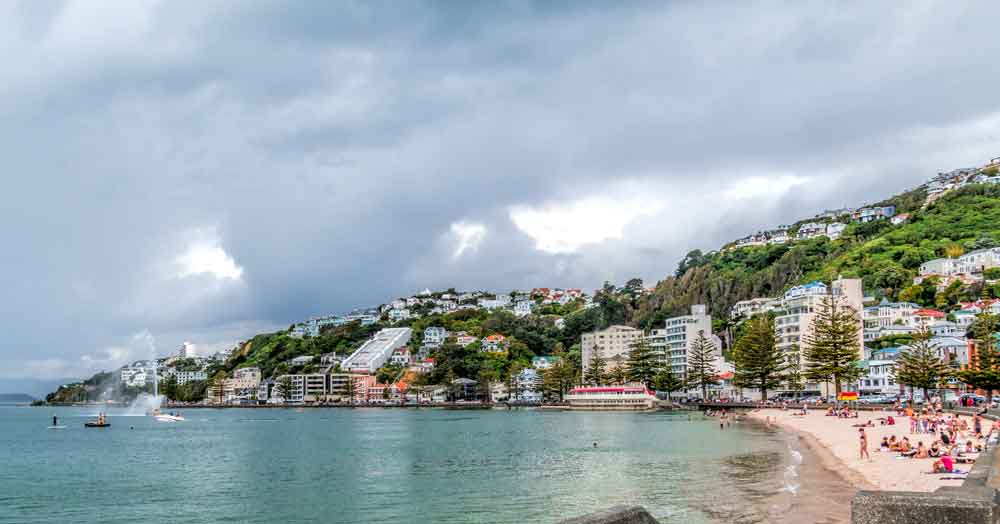
There are several trails through the bush but an option that is a little easier if you are unsure where you are going is to walk along the waterfront through Oriental Bay and then follow the road up to the lookout at the top. The benefit of going this way is that you not only have the 360-degree view from the top but some really great perspectives as you walk.
If you prefer not to walk another option is to jump on bus 20 at one of the city stops such as Stop A in Courtney Place and it will take 10 minutes to get up there and cost around $4.
Weta workshop
Something that Middle Earth fans or those with an interest in movie making won’t want to miss in the city is a trip out to Weta Workshop, the special effects and prop company started by Peter Jackson.
It’s based out in Mirimar and there are a variety of tours run by Weta Workshop themselves which can include transfers from the city. Other companies also run tours that include the workshop, read carefully to know what you are getting, some only include the shop and public areas not getting behind the scenes.
The 45-minute weta cave workshop tour is the most popular where you’ll learn about the props, costumes and creatures from a variety of films from Middle Earth and others and includes seeing artists at work.
Then there’s also a 45-minute miniature effects tour to understand how these scaled-down scenes work to produce such realistic results for TV and movie production.
You’ll also have time to explore the onsite museum, take a photo with the giant troll, look through the shop and watch their own documentary.

Where to eat in Wellington
Artisan Dining House at the Bolten open 5.30 until late
Artisan Dining House was conveniently located across the road from where we were staying at the Sofitel but if we were staying at the other end of town next time I’d still make the trip up here. I’d heard good things about it for a hotel restaurant but I was still blown away by how much we enjoyed it.
The flavour and textural combinations of the dishes are original and well thought out but not over orchestrated. Serving an amuse-bouche is a nice touch not seen enough anymore, that wild mushroom risotto with the crumbed egg and a touch of sharpness from the pecorino is perfection and the fish was locally caught, simple and perfectly cooked. They also set themselves apart with staff who were friendly, had great energy and were attentive in that they were there before you knew you needed them but without hovering.
Highly recommended and wish I’d known about this one when I visited the city more regularly.
Dockside Restaurant and Bar
Dockside has a great location in the renovated Shed 3 on Queens Wharf. It offers an excellent menu and fine dining experience with a full glass front that opens out onto the harbour for an exceptional outlook. They focus on the best and freshest local ingredients and the meal was excellent.
Perhaps it was the night we went but the service was a little cold and overly present for my preference, nothing serious but interrupting conversation multiple times every course to ask how the meal was made me feel we were being unnecessarily rushed.
The food was excellent though and while they are known for their beef I can’t go past New Zealand fish, that Akaroa salmon was fantastic and you really can’t go wrong with any local white fish. After almost 30 years this really is a Wellington icon that you want to try yourself if you have the chance.
Coenes bar and eatery (103 Oriental Parade)
If you’re headed around to Oriental Bay or Mt Victoria you’ll pass Coenes hanging right out over the water. It’s a great position and a spot on the deck is ideal for brunch or lunch in the sunshine.
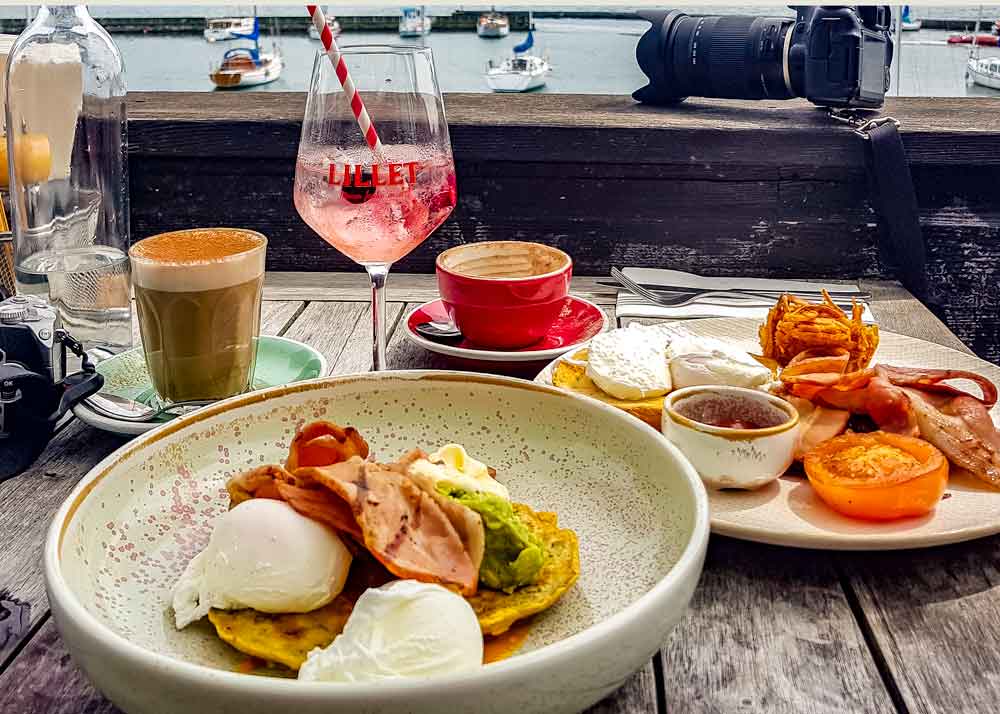
Menu is standard brunch fair but the Corn Fritter was tasty, big breakfast substantial and the poached eggs cooked perfectly. Coffee was strong and good, the gin cocktail was perhaps over the top but nice and it was a very late brunch.
Wellington Chocolate Factory
Somewhere you don’t want to miss when you’re in the Te Aro area is the Wellington Chocolate Factory, they make the best organic, ethically sourced and DELICIOUS chocolate around, I really wish I’d picked up a few more bars, the didn’t last long. The casual modern cafe is a pleasure to relax in for a while over a hot cuppa or one of their specialty chilled chocolate milk that is perfect on a summers day.

I weakened and went with these hand-made Mallowpuff treats which are a riff on the Kiwi biscuit of the same name but 100x more decadent. The friendly team were fantastic and can probably answer everything you ever wanted to know about chocolate.
Crab Shack on Queens Wharf open 11.30 until late
With a prime position in one of the renovated warehouses on Queens Wharf, the Crab shack is an easy spot to grab a quick drink and snack or linger a while over a meal. It’s fresh, delicious and reasonably priced.
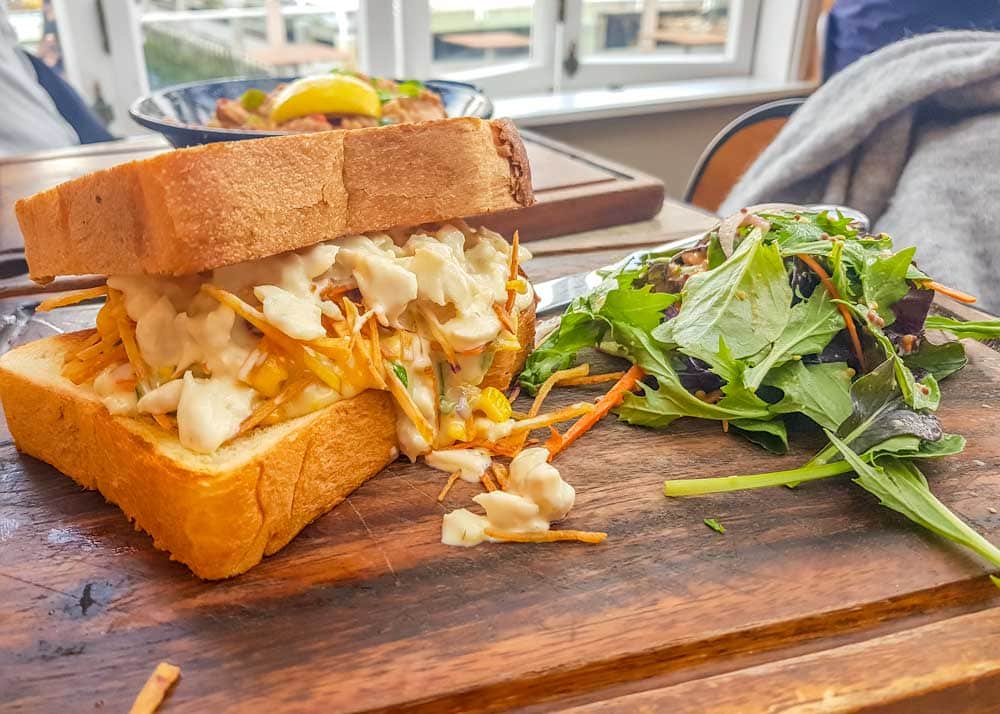
Everything we tried was delicous, the place has great energy by day or night and the staff are really friendly. We were really lucky to get a window table without waiting but the place is popular for a reason so it’s worth the wait if you need to.
They are best known for their cult classics like the crab pots and the widely raved about fish pie but to be honest you are unlikely to be disappointed. This crab sandwich with fresh green salad was excellent and so was the Jambalaya, clam chowder and tempura soft shell crab taco.
Rātā Cafe at Zealandia sanctuary

I’ve talked at length about our trip out to Zealandia, it really was a highlight of this trip home but I was also impressed with Rātā Cafe onsite there. Most cafes at attractions are an afterthought and the food offers an option if you’re hungry but nothing special.
I loved that at Rātā they used local produce by preference and grew vegetables and herbs onsite. Then there was the use of native ingredients like kawakawa in the pesto for my burger.
Finally, they put vegan, vegetarian and gluten-free options prominently on the menu and make a darn good coffee.
Karaka Cafe
Who doesn’t want to support a local business whether you are at home or travelling and the Karaka Cafe on the edge of Whairepo Lagoon is owned and operated by the Retimanu whānau (family).
Dishes on the menu are listed in Maori and English, popular traditional favourites like seafood, fish and pork feature along with some fun sounding fusion creations including a Hangi salad with the traditional roasted root vegetables on a bed of greens and a dressing flavoured with Horopito, an endemic plant with a delicious peppery flavour.
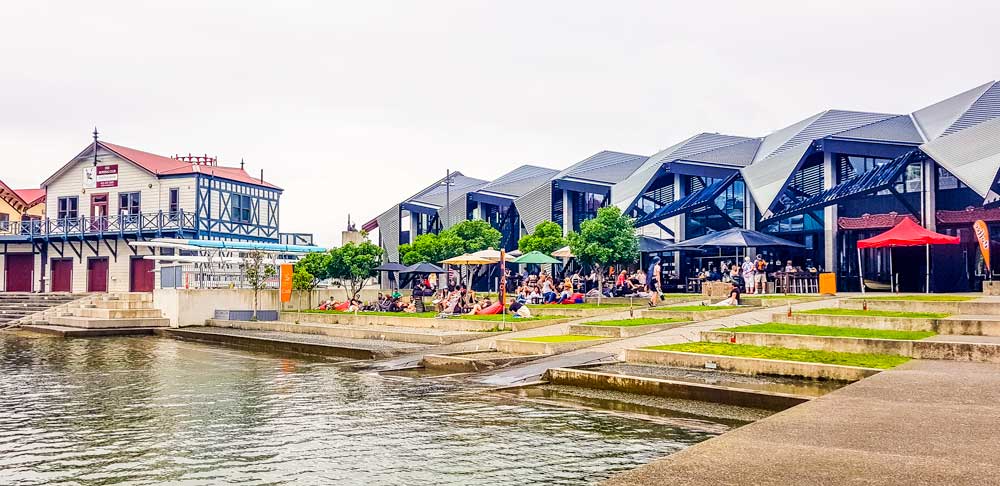
The familiar brunch favourites are on the menu too and if all you need is an afternoon cuppa or one of their delicious smoothies you can take that out grab a blanket and stay awhile to enjoy the view.
Almost Gourmet food cart
It’s not often a food truck is going to make it onto a list of must-try places in a city but this one won out on several fronts. They move around a bit and we actually ran into them on the front near Wahirepo lagoon on Saturday, then at the Harbourside markets on Sunday. The guys in there are super friendly and accommodating, maybe I did look like I might cry when they had run out of paua fritter batter but they rounded up what they did have left and surprised me with a bonus one with my order.
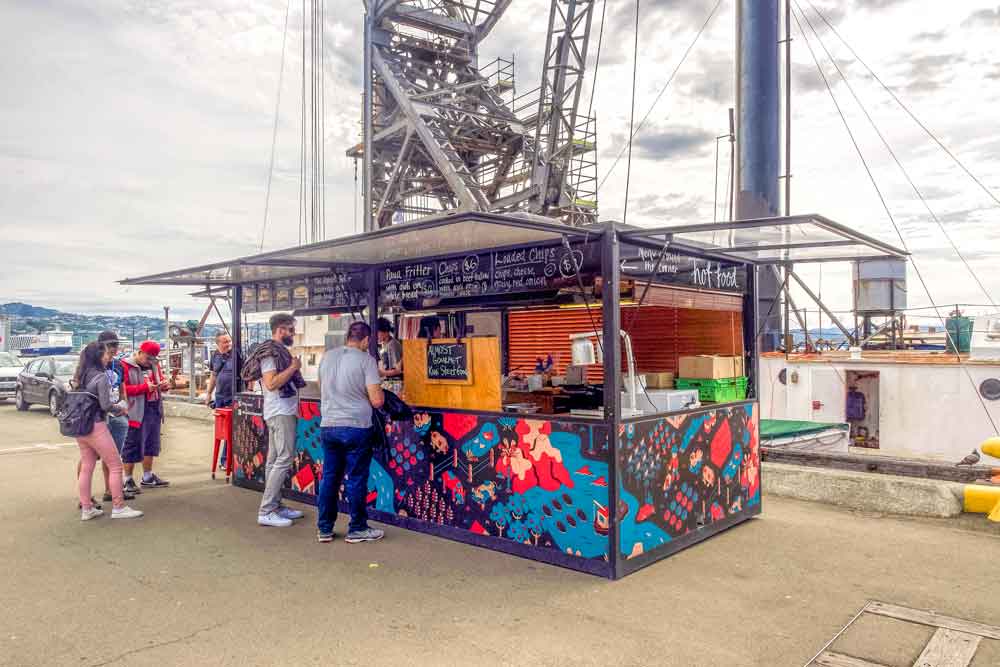
Before you turn your nose up at fritters they are something that NZ does really well. Japan has okonomiyaki, New Zealand has fitters, they are both so much more than the sum of the parts. Paua (abalone) fritters are the bomb when done well, whitebait fritters in-season can’t be missed and mussel fritters when nothing else is in season are still excellent. They will also make you the best chips (fries) you have ever had.
Where to stay in Wellington
Being a relatively compact city with attractions scattered from one end to the other there’s really no one right place to stay but several great options.
On our most recent visit we stayed at the Sofitel Wellington on Boulcott Street, this is at the government end of the city, close to the Beehive and Queens Wharf. It’s a great position for exploring the city on foot, the train station and ferries are close, there are also many great restaurants nearby.
The Sofitel is friendly and welcoming, the French styling and Kiwi hospitality is a great combination. The rooms are styled with rich fabrics, vintage gold and brass while the linens and extra touches like a monsoon shower head, espresso machine and sound system added to the comfort and relaxation.
Walking around Wellington another property that stood out to us is the QT Apartments. It’s located down near Te Papa and Oriental Bay. I like that it is modern and arty, also being apartments you have a bit more room but realistically on a city stay there are too many good restaurants, cafes and bars to spend much time in your room.
The QT is closer to Cuba Street, a more quirky part of town and with more night life but I prefer the restaurants at the Sofitel end. It’s a tough choice.
The best time to visit Wellington City
Like most of New Zealand, Wellington can experience all 4 seasons in a single day. I have to admit to loving Wellington when the sun shines and that is driven by us enjoying so much time outdoors. Even in this guide you will see the majority of the activities have an outdoor focus and even our choice of dining is generall alfresco.
You’ve probably heard the reference to windy Wellington and when the wind blow, especially when it comes from the south and funnels through the city streets it can be bitter. For that reason I personally avoid the city in the depth of winter.
Spring through autumn can be great and there certainly are things to do when the weather closes in. November to April is usually my preference. On this November trip we had generally great weather, warm and sunny but you’ll notice in some photos a stormy sky appears particularly out towards the Cook Strait where it often comes in from.
Getting to and around in Wellington
Wellington is the capital city of New Zealand and a major airport hub for both international and domestic flights.
Wellington Railway Station is a dramatic heritage building. We arrived in here on the Northern Explorer, a scenic train journey between Auckland and Wellington. It takes around 10 hours and along the way you’ll see a good selection of the green and stunning scenery this little country is famous for including travelling through the Tongariro National Park, a route you can’t take by road.
Getting around the city
Wellington is a relatively compact inner-city situated on the Wellington harbour and well suited to exploring on foot, although you’ll be walking up and down a few hills but nothing too serious.
It was a little strange for me to see Wellington without the trolleybuses and their overhead cables after they were discontinued in 2017. I remember riding on these as a child and the distinctive character they gave the city when I commuted down here for work.
Another distinctive form of transport that is still around is the cable car between Lambton Quay and the Botanic Gardens. Even if you are short on time I’d highly recommend getting the return ticket up for the experience and the view.
Travel tips for travel in New Zealand
If you found this useful please consider saving it to Pinterest. It helps us, and it helps other travellers to find the information they need.
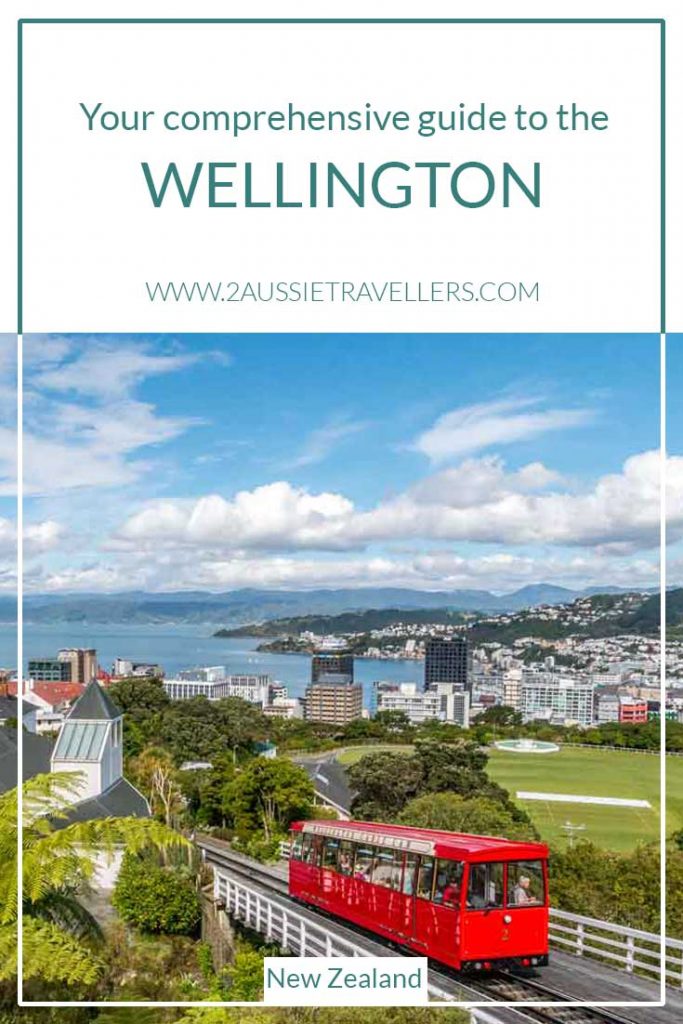

The post Things to do in Wellington | City Guide appeared first on 2 Aussie Travellers.
from 2 Aussie Travellers

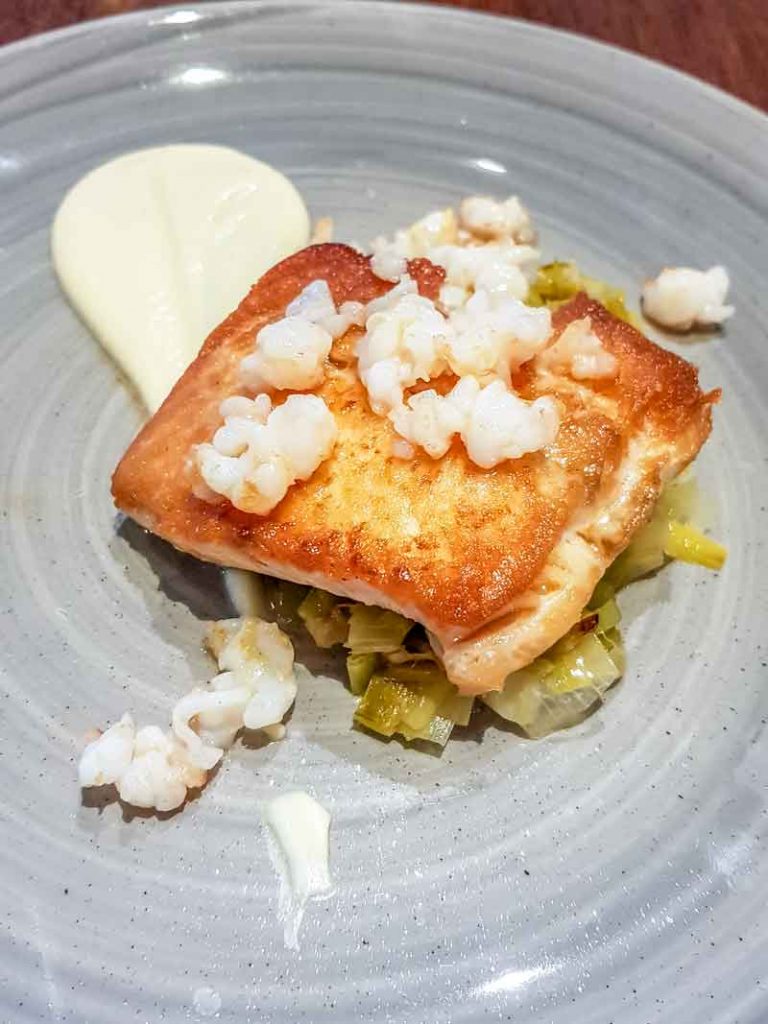
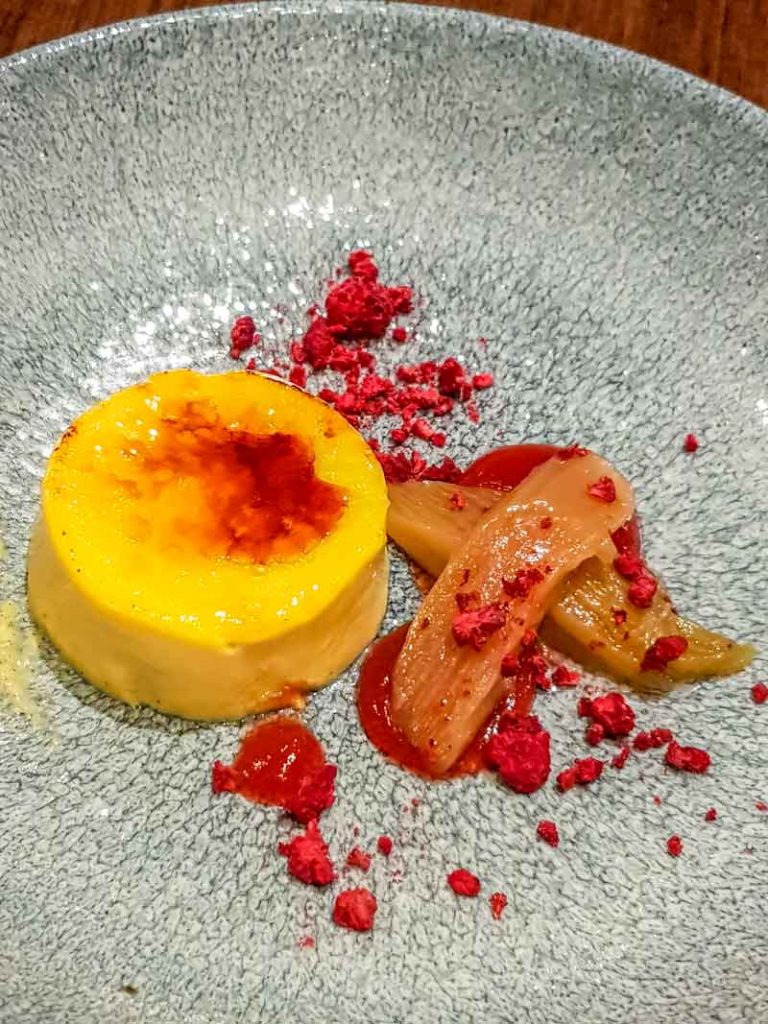





No comments:
Post a Comment